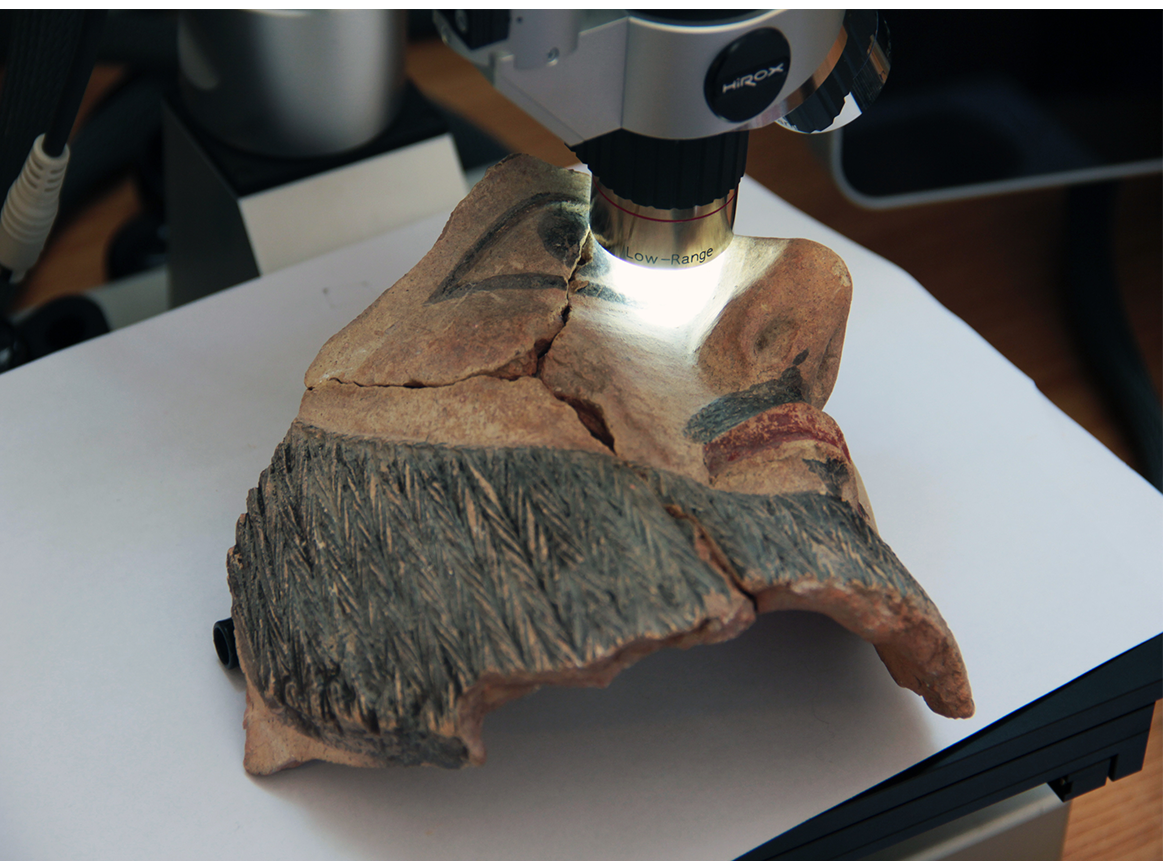Tracing Color on Ancient Statues and Artefacts
Polychromy in antiquity
Among the preliminary Art Characterization projects at STARC was the non-invasive multi-technique study of the polychromy on limestone, marble and terracotta statues and statuettes from the Cypro-Archaic through the Hellenistic period. This was a collaborative project with the Centre de Recherche et de Restauration des Musées de France(C2RMF). Selected objects were examined in-situ at the Bank of Cyprus Cultural Foundation, the Cyprus Archaeological Museum, the Palaepaphos Archaeological Museum and the Paphos District Museum with the use of digital microscopy, imaging under Ultraviolet (UV) light, Visible- Induced Luminescence (VIL), micro-X-Ray Fluorescence Spectroscopy (XRF) and Fiber Optics Reflectance Spectroscopy (FORS). The analysis focused on the characterization of artists’ use of color in ancient Cyprus and the provenance of the pigments used. Results revealed inscriptions on limestone reliefs and traces of yellow, red, green and black pigments, all undetectable to the naked eye.
Identified pigments are mostly iron-containing pigments: red ochre and hematite for red color, yellow ochre and goethite for yellow, green earth for green color. A copper-containing green, likely of naturalorigin, is detected only on two artefacts. The blue color was obtained only with Egyptian blue, which is found all around the Mediterranean. Two types of black, carbon black and iron-manganese black were identified. The applied methodology proved to be effective for the identification of general types of pigment compounds, enabling the preliminary characterization of polychromy while avoiding microsampling.


